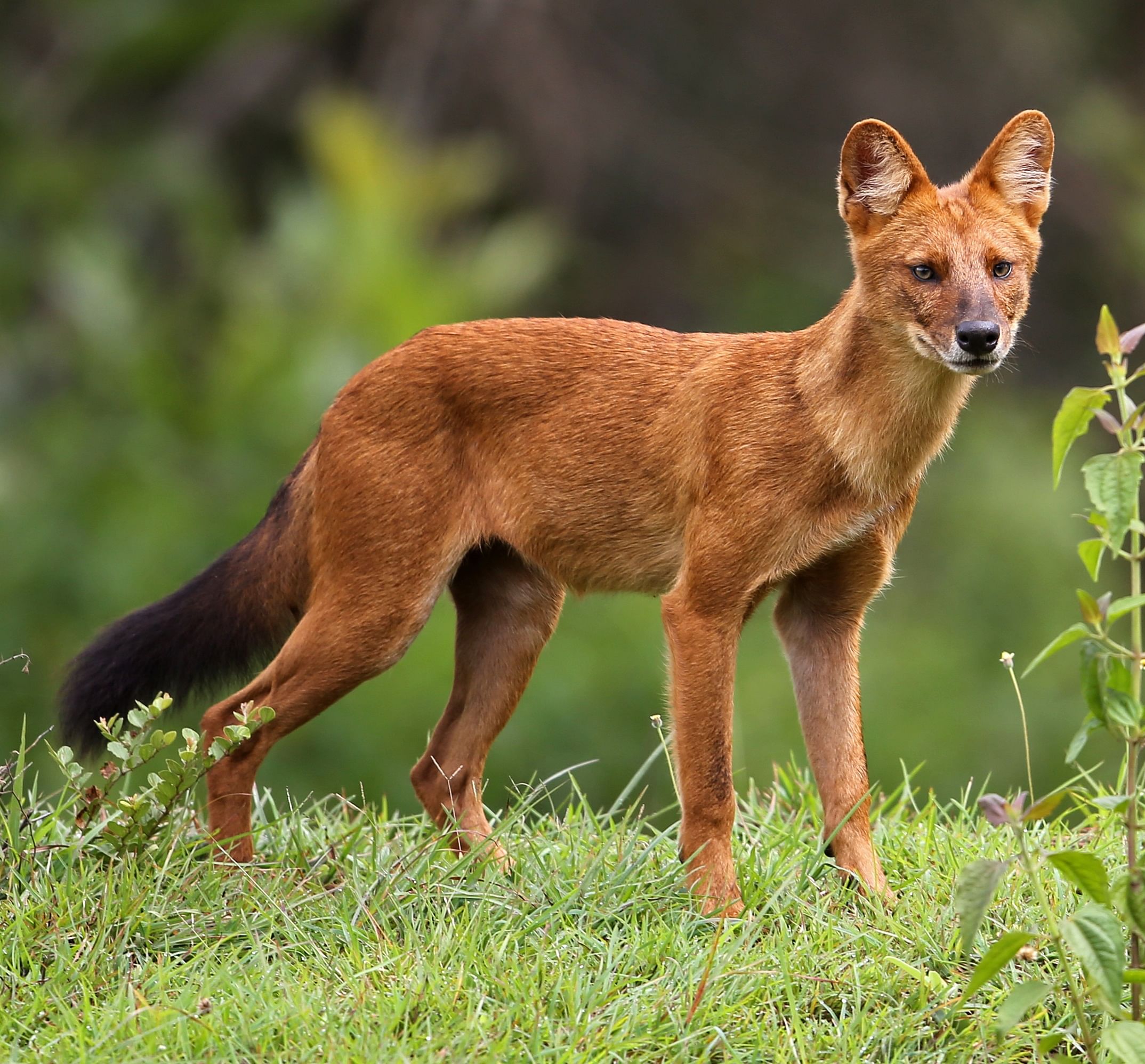
The other day, a photograph in a newspaper, of a wolf making a meal of a deer that had gravitated towards the lake at Thekkady to slake its thirst arrested our attention.
The point really is that the wolf in question was a dhole. The Indian Wild dog or the dhole bears resemblance to the ordinary village cur, but its ears are more rounded, its coat is rust coloured, and it has a bushy tail with black tuft. The dhole is a formidable foe to the deer family, and when it hunts in a pack formation, it can even out hunt a leopard.
During our many visits to the Mudumalai Wildlife Reserve and Upper Bhavani, we have witnessed the well-organized hunting-spree, with members of such packs taking turns in pursuing their prey relentlessly.
Yet another crafty ploy, is when members of the pack station themselves at strategic points at the outskirts of the scrub, this regimentation enables them to flush out the prey and intercept it at some stage of the chase. After a hot pursuit, the members reassemble by whistling.
The dholes also have an acknowledged boss. Another interesting fact is that just before the birth of a litter, some members, ‘emigrate’. A pack with 16 could dwindle to one of seven or eight. This exodus is a calculated move to regulate the size of a pack— a smaller number of dholes can operate more efficiently in obeying orders from the leader.
Sunrises have beatific appeal at Upper Bhavani. On this particular morning I recall so vividly, dawn splashed its crimson and gold hues on the cerulean sky. The hillscape with patches of grassland shimmered green and gold, the susurrus of a pellucid mountain stream fell on our listening ears, and the crisp morning air wafted the freshness of pine and wattle, while rhododendrons blazoned in scarlet bloom.
Clearly etched against the skyline, on a rocky contour, we spied a Nilgiri Tahr, and in a patch more low than montane, a herd of Sambar proceeded towards a salt-lick and were soon concealed by sunburnt bracken.
A heart-rending cry shattered the peace of the morning. My family followed the scene of action by driving to the place from where the cries still came though feebly. Naturalists told us that a pack of 15 dholes can easily devour a 100 kilos of Sambar flesh, gorging greedily, leaving little for the scavenging creatures. But a bit of the lower limb was left, and one of the members of my family picked it up and brought it to the game hut. There is a photograph that still remains with us to remind us of the gory chase that rudely encroached upon the halcyon peace of that morning in Upper Bhavani.